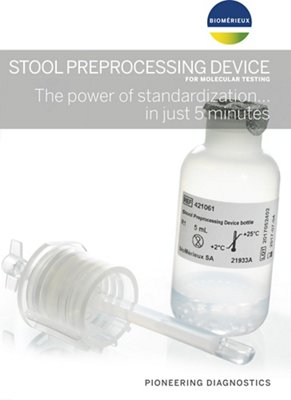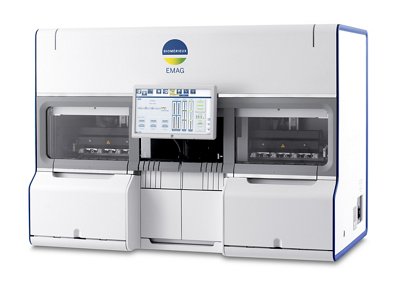STOOL PREPROCESSING DEVICE
Stool preprocessing for molecular testing
Stool preprocessing device enabling standardized stool sample preparation for nucleic acid extraction of viruses, bacteria and parasites in about 5 minutes.
Disclaimer: Product availability varies by country. Please consult your local bioMérieux representative for product availability in your country.
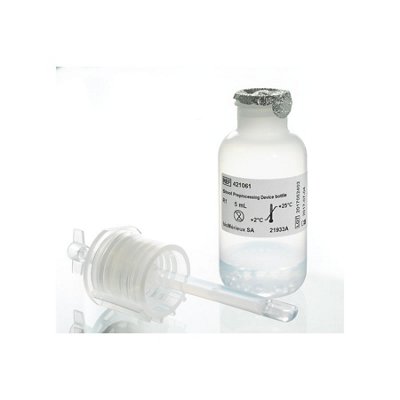
- Overview
- Specs & Resources
Overview
- Just 5 minutes hands-on time
- Standardized, validated for qualitative & quantitative applications
- Entirely closed safe system
Stool samples are among the most difficult and time-consuming clinical samples to process for molecular biology assays. This is now a thing of the past thanks to bioMérieux’s new 4-step Stool Preprocessing Device.
The stool preprocessing device is a stool sampling and pre-treatment device designed to prepare stool samples for molecular biology assays in just 5 minutes of hands-on time.
Standardize your stool bench for molecular testing
Gain the confidence of standardized preprocessing.
- Sampling, calibration, homogenization and filtration: all in one device
- Validated for qualitative and quantitative applications
Study shows reproducible quantification and better limit of detection (LOD) of Adenovirus with the Stool Preprocessing Device:
“Our results showed that the device reproducibly quantified HAdV DNA in stool samples when using different extraction and amplification systems. In addition, the performance of the Stool Preprocessing Device was not affected by the stool form as estimated with the Bristol scale. Compared to the laboratory's routine preprocessing technique, the Stool Preprocessing Device provided a better LOD and increased slightly the detection rate of HAdV-infected samples. In the routine monitoring of patients, the Stool Preprocessing Device enables the detection of HAdV replication in the gastrointestinal tract earlier and for longer time periods.”
Save hours – not minutes
Spending too much time preprocessing stool? You don’t have to.
- Just 5 minutes hands-on time (compared to 1-3 hours)
- Ready-to-use filtered solution for nucleic acid extraction

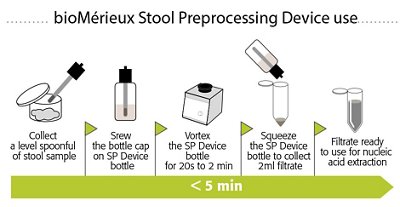
Simplicity and safety for your stool preprocessing workflow
The Stool Preprocessing Device makes preprocessing both easier and safer.
- No sample weighing
- No pipetting
- Entirely closed process
- No sample contamination
stool-preprocessing-device-video
stool-preprocessing-device-video
Specs & Resources
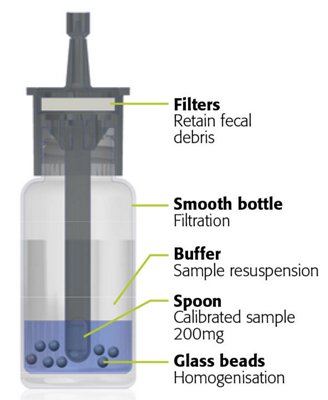
| Product Name | Reference |
|---|---|
| Stool Preprocessing Device | Ref. 421061 |
| Stool Preprocessing Device Vortex adapter | Ref. 422152 |
| Stool Preprocessing Device Rack | Ref. 422163 |
Feghoul L. et. al. “Evaluation of a New Device for Simplifying and Standardizing Stool Sample Preparation for Viral Molecular Testing with Limited Hands-On Time.” J. Clin. Micro. April 2016, 54(4): 928–933.
